Sightseeing Tour Suggestion - Berlin
- Suggested Route - Your tour could look like this
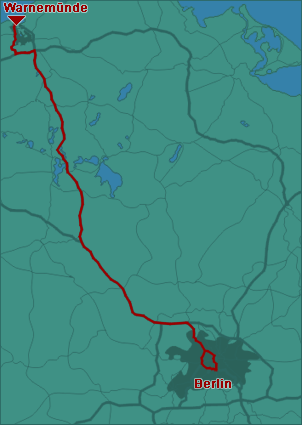
- Destination: Berlin
- Suggested Route: Warnemünde - Berlin - (Potsdam) - Warnemünde
- Type: Day Tour
- Length: ca. 7 - 9 hours from hotel or cruise ship
- Passengers: max. 8 people
- Return: per your wish, at the latest one hour before ship sails
This tour to Berlin is full of legendary images. You will return to Warnemünde with many impressions and memories. The ride to Berlin takes 2-2-5 hours. It is possible to add multiple stops to this tour to other interesting spots along the way: one suggestion is a stop in beautiful Potsdam.
booking or question
Things to See in Berlin
- Olympic Stadium
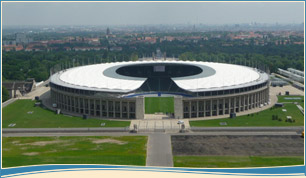
- The Olympic stadium in Berlin was erected fort he 1936 Summer Games. From the bell tower you have an impressive view over the stadium and sporting areas. In 2006, the stadium was renovated for the World Cup and today has an entirely new aura. There is a short 20 minute historical presentation over the 1936 games as well as the possibility to get a tour through the facility.
- Charlottenburg Palace
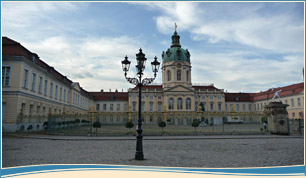
- In its present form, with the Palace Theater and Small Orangerie (built during the reign of Friedrich Wilhelm II) you can take a pleasant 20 minute walk around the exterior. On the backside is an impressive palace garden. On days with bad weather, there are many museums inside the palace to visit such as the portrait gallery or the porcelain museum.
- Kaiser-Wilhelm-Memorial Church
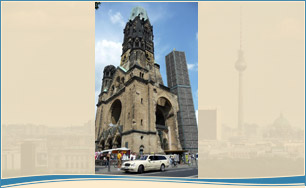
- The Memorial Church, opened in 1895, was destroyed in WWII. In the 50s, the original tower with its 113 meters was restored. The memorial's hall full of mosaic and marble reliefs is a priceless sight and worth visiting. From the ruins the "Kirchenshiff", foyer, baptismal font, and tower are still to be admired. Also close by is the famous KaDeWe (Kaufhaus des Westens) for your shopping pleasure.
- Restaurant Schildkröte
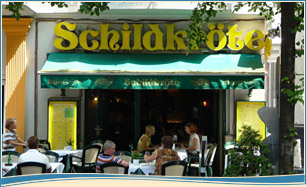
- The "Schildkröte" Restaurant opened in 1936 and retains its charms from that time. Enjoy a warm and friendly atmosphere with a delicious German menu. The friendly service with "Berliner Schnauze" awaits - as do many other delicious offerings like cooked pig knuckles with sauerkraut, sausages, schnitzel and more!
- Victory Column
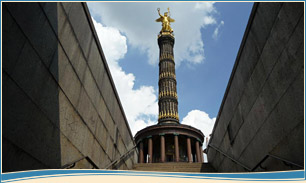
- The Victory Column, referred to as "Goldelse" in folks music, stands in the middle of the Great Star Circle and can be accessed by an underground foot passage. Ringed by golden canons, Victory is a monument to the three victories of Prussia over Denmark, Austria and France. It is possible to climb to the top for an incredible view of Berlin - Potsdamer Platz, the Reichstag, Brandenburg Gate and the Berliner Tiergarten.
- Bellevue Castle
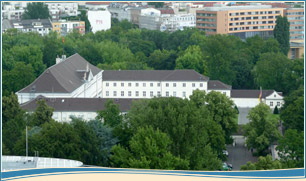
- Bellevue Palace is in the center of Berlin, not far from the Victory Column, the Reichstag, and the Brandenburg Gate. First used as a pleasure palace, over the centuries it had various other uses, but was ultimately destroyed and burned during WWII. Today it is the home of the president of the Federal Republic.
- Brandenburg Gate
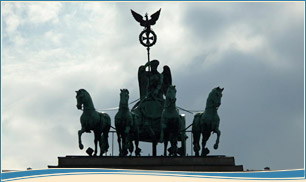
- The Brandenburg Gate wasn't always the landmark of Berlin and its history is quite remarkable. It was erected in 1791 based on plans from Carl Gotthard Langhans out of sandstone and 3 years later came the Quadriga, ornamentation by Johann Gottfried Shadow. Later the Iron Cross and the laurel wreath on the staff of the Goddess of Victory. Today it is a symbol of reunification, marking the border between east and west Berlin.
- Reichstag
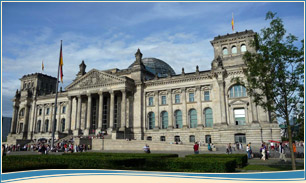
- Kaiser Wilhelm II laid the ground stone fort he Reichstag in 1882. From this spot on November 9, 1918, the first unification of Germany was announced. Badly damaged during WWII, the building was restored in 1970 and became the national parliament building after reunification and the fall of the Berlin Wall. Once the wall fell, architect Sir Norman Foster created plans for a renewed restoration, adding the great glass dome. Tours in English are available, but we suggest booking in advance to have a reserved time.
- Chancellor's Building
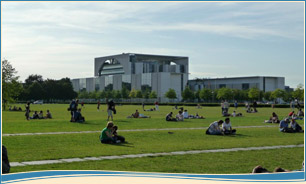
- Since 2001, the Chancellor's Building has been the centered in Berlin as a part of the "Bond of the Republic". It is part of a collection of federal offices in the government quarter along with the Paul-Löbe-House, the Marie-Elisabeth-Lüders-House and along an area for the future Citizen's Forum. This building ensemble is one oft he largest government offices in the world with 120.000 square feet of space.
- Holocaust Memorial
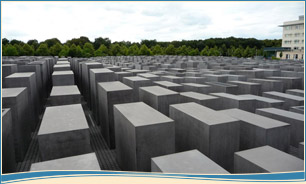
- The monument to the murdered jews of Europe is a memorial on the jewish victims of the Holocaust which occurred under the leadership of the National Socialists during the Third Reich. Built according to plans by the New York architect Peter Eisenmann; a Nach Plänen des New Yorker Architekten Peter Eisenmann konzipiert und errichtet, finde 190,000 square feet area is full of massive stones - underground is the City of Information. Opened on the 12th of May 2005, the underground museum documents the fate of jewish Holocaust victims.
- Hitler's Bunker

- Five meters under the garden of the old Chancellor's building lies Adolf Hitler's bunker which was used in the last weeks of WWII. Made of 5 meters thick cement and steel and on 2 floors, this is where Hitler spent the last days of the war, eventually committing suicide with his wife, Eva Braun 2 weeks before the end of the war. Today this former bunker is visited by people from all over the world interested in this point in history.
- Potsdamer Platz
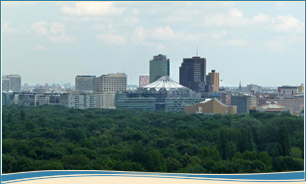
- Potsdamer Platz is at the cross of several streets and serves as an entry point to the city and is a place for those great business who wish to have an major presence in Berlin. This modern market structure was created after designs by architects from North America and at one point during building, this was the largest construction site in Europe. The Potsdamer Arcade is the central point of the plaza and is 180 meters of stores, restaurants, hotels, a cinema and various shops.
- The Berlin Wall Remains
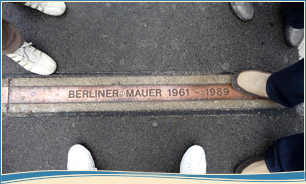
- In the night of August 13, 1961 in Berlin streets were closed with barbed wire along what would become the Berlin Wall. The wall was built to stem the flow of people trying to leave the DDR (Deutsche Democratic Republik). Immediately, the city was divided into 2 parts and the inhabitants. The wall was 4 meters tall and made of concrete and metal. As suddenly as the Wall came, in November 1989 it went.
- Checkpoint Charlie
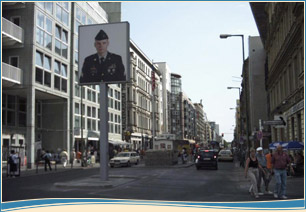
- The most well known checkpoint of the border between East and West, Checkpoint Charlie was the watchpoint between Berlin Center (East) and Kreuzberg (West). It was the point of crossing for allied forces and ambassadors as well as foreigners, diplomats and workers who represented the various functions of the BRD and DDR. Today one of the small watch houses stands on this historic spot.
- Jewish Museum
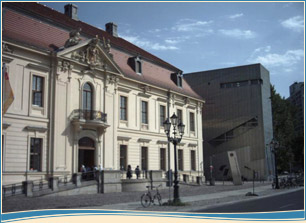
- September 10, 1671 is the founding of the Jewish Quarter in Berlin and Jewish life flourished until the beginning of the National Socialist reign of terror and murder in Germany. Today, the Jewish Museum stands as reflection on these awful events. The Jewish museum has an assortment of exhibitions from German-Jewish history, archives, and research.
- Gendarmenmarkt
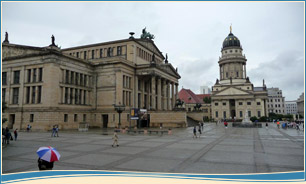
- The Gendarmenmarkt, located in the Friedrichstadt Quarter, is one of the prettiest plazas in historical Berlin. It gets its name from the personal guard of Friedrich Wilhelm I., dem Kürassierregiments der "Gens d'armes". On this wide open market, you will find several meaningful monuments - to the north is the French Cathedral, to the South is the German Cathedral, and to the West is the market. Their beauty did not exempt them from bombing during WWII and the newly renovated buildings await your visit.
- Unter den Linden

- "Unter den Linden" is a 1500 meter long by 60 meter wide street of impressive buildings and inhabitants. It runs from Pariser Platz to the Schlossbrücke. Home to many significant works of architecture, you can find the Old Library, Humbolt University, St Hedwigs Cathedral, the Crown Prince's Palace, the German Historical Museuem, Brandenburg Gate, the City Opera House, and the Hotel Adlon and many others.
- New Synagogue
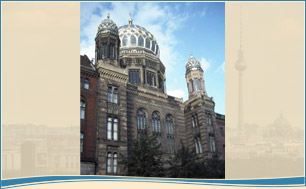
- In the distance one can see the New Synagogue in Oranienburger Street in Berlin Spandau With ist golden dome - a symbol of Jewish Life in Berlin. It was built in the middle of the 19th century by Eduard Knoblauch and Friedrich August Stüler. During Krystalnacht on November 9th, 1938, members of the SA set the building ablaze,but the complete destruction by fire was prevented by the courage of policeman Wilhelm Krützfeld. He called the fire brigage. A memorial plaque is now attached to the wall of the building which was rebuilt after sustaining damage during WWII.
- Berlin Cathedral
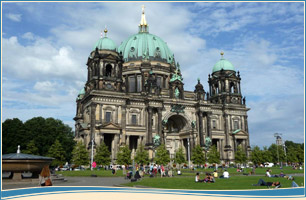
- Overlooking the Berliner Lustgarten is the beautiful Berlin Cathedral. Built between 1894 and 1905, this Italian Renaissance style building is one of the most important protestant structures in Germany. Destroyed both during WWII and further during DDR times, the restoration began in 1993. The cathedral stands under historical monument protection today and is the joining of three different church sections: the Predigt, Tauf and Trau. The main church is overlooked by the 12 Apostles Organ from the workshop Sauer. It is also possible to visit the crypt where over 90 members of the Hohenzollern dynasty lay. You have a beautiful view onto the Museum Island from the church.
- Red City Hall
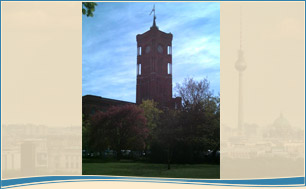
- The Red City hall lies close to the TV Tower. It gets its name from the red brick used to construct the imposing tower. Today it serves as the Berlin City Hall and the Parliament for Berlin as well as the offices of the mayo and the city's guests and visiting officials are welcomed here. It is possible to visit the City Hall also during the Night of the Museums. One of the oldest and most beautiful fountains in Berlin, the Neptune Fountain, is located direct in front of the building.
- East Side-Gallerie
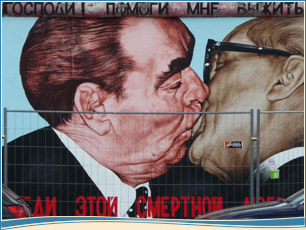
- During DDR times it was illegal to paint on the Berlin Wall. Yet with the opening of the DDR and fall of the wall. Now, parts of the wall on Mühlenstrasse between Berlin-Kreuzberg and Berlin-Friederichshain are referred to as the East Side Gallerie where 118 famous graffiti artists have turned this old section of the Berlin Wall into one of the longest art galleries in the world.
- TV Tower
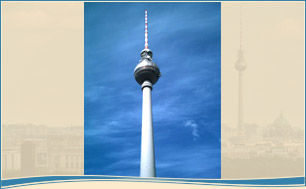
- The TV Tower, called the Towering Asparagus by the locals, is in the very center of Berlin. It came about out of an emergency need for an antennae and was expanded to the height of 368 meters. The Tower Ball at the top has 2 floors (one a viewing platform and the other a rotating restaurant which turns completely every 2 hours) and offers an incredible panorama over Berlin. You can reach the top by elevator. Reservations are recommend fort he restaurant as it is very hard to get a seat.
























